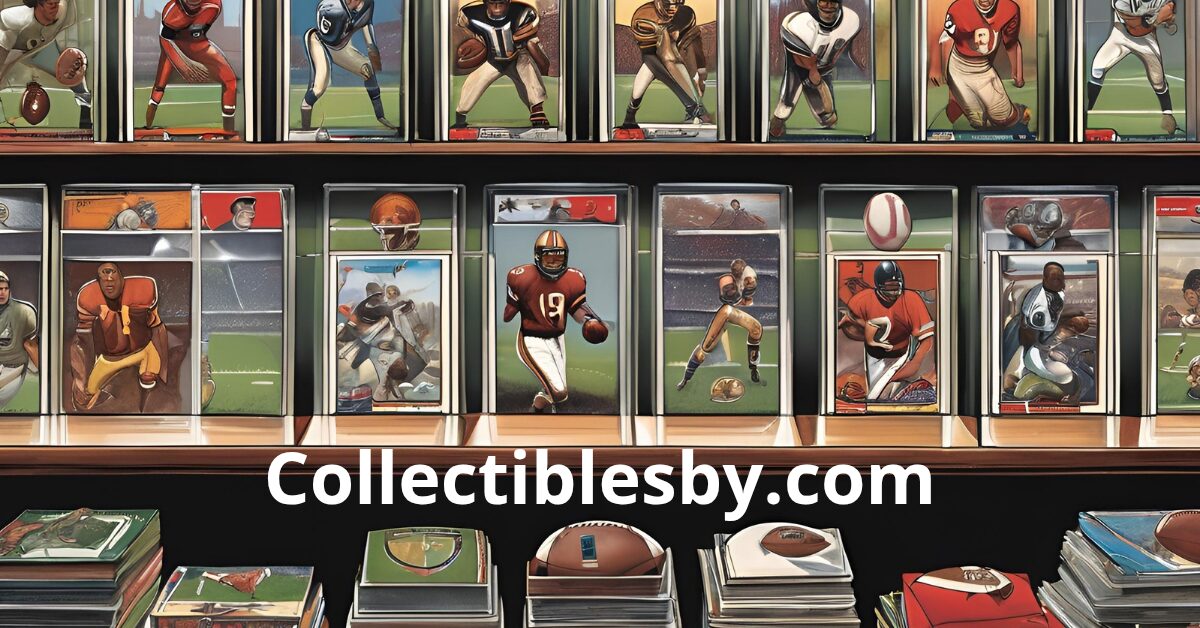The crisp snap of a fresh pack, the glint of foil, the anticipation of revealing a hidden gem – these sensations are the lifeblood of NFL football card collecting. It’s a hobby that transcends mere acquisition, weaving together sports fandom, historical preservation, and a tangible connection to the gridiron’s storied past. For millions, NFL football cards are more than just pieces of cardboard; they are miniature time capsules, each capturing a fleeting moment of athletic prowess, a slice of football history.
The allure of NFL cards is multifaceted. For the casual fan, it’s about owning a piece of their favorite team or player, a tangible representation of their passion. For the serious collector, it’s a pursuit of rare and valuable cards, a quest to complete sets, and a deep dive into the intricate details of card production and market trends. And for the historian, it’s a journey through the evolution of the game, a visual chronicle of changing styles, iconic players, and the cultural impact of professional football.
A History Etched in Cardboard:
The story of NFL football cards mirrors the evolution of the league itself. Early cards, produced in the late 19th and early 20th centuries, were often included in tobacco products, reflecting the marketing practices of the era. These cards, now highly sought after by collectors, provide a glimpse into the nascent stages of professional football, when the game was still finding its footing.
The post-World War II era saw a surge in popularity for football cards, driven by the growing popularity of the NFL. Companies like Bowman and Topps emerged as major players, producing sets that captured the excitement of the game and the charisma of its stars. The 1950s and 1960s, often referred to as the “golden age” of football cards, produced iconic cards featuring legends like Jim Brown, Johnny Unitas, and Bart Starr.
The 1980s and 1990s witnessed a boom in the sports card industry, fueled by speculation and the rise of the “junk wax” era. Production numbers soared, and numerous companies entered the market, leading to an overabundance of cards. While this period is often criticized for its overproduction, it also produced some memorable sets and introduced innovative printing techniques.
The 21st century brought about significant changes to the football card landscape. The rise of the internet and online marketplaces revolutionized the way cards were bought and sold. Digital trading cards emerged, offering a new and immersive collecting experience. And the focus shifted towards high-end, limited-edition cards, catering to the growing demand for premium collectibles.
The Anatomy of an NFL Card:
Understanding the anatomy of an NFL football card is crucial for any collector. The front of the card typically features a photograph of the player, along with their name, team logo, and position. The back of the card provides statistical information, biographical details, and sometimes even a brief anecdote about the player’s career.
The quality of the card is determined by several factors, including the condition of the corners, edges, and surface. Professional grading services assess these factors and assign a numerical grade to the card, which significantly impacts its value.
Variations and errors are also highly sought after by collectors. These can include printing errors, variations in player photos, or even cards featuring players who were never officially on the team’s roster.
The Thrill of the Hunt:
For many collectors, the thrill of the hunt is as rewarding as owning the cards themselves. Searching for rare and elusive cards can be a challenging but exhilarating experience. Collectors scour flea markets, antique shops, and online marketplaces, hoping to stumble upon a hidden gem.
Card shows provide an opportunity to connect with fellow collectors, trade cards, and learn about the latest trends in the hobby. These events often feature autograph signings by current and former NFL players, adding another layer of excitement for fans.
Online communities and forums offer a platform for collectors to share their knowledge, discuss card values, and trade tips on finding rare cards. These online spaces foster a sense of camaraderie and provide a valuable resource for collectors of all levels.
The Investment Aspect:
While many collectors are driven by their passion for the game, the investment potential of NFL football cards is undeniable. Rare and high-grade cards can command significant prices, making them a viable alternative investment.
The value of a card is influenced by several factors, including the player’s popularity, the card’s rarity, and its condition. Rookie cards of Hall of Fame players are particularly valuable, as are cards featuring iconic moments in NFL history.
However, the sports card market can be volatile, and values can fluctuate based on player performance, market trends, and economic conditions. Collectors should approach card collecting as a hobby first and an investment second.
The Cultural Significance:
NFL football cards are more than just collectibles; they are cultural artifacts that reflect the changing landscape of American sports and society. The images on these cards capture the evolution of football fashion, the changing demographics of the NFL, and the cultural impact of the game.
Cards featuring pioneering players, such as Jim Brown and Jackie Robinson, serve as reminders of the struggles and triumphs of athletes who broke down racial barriers. Cards featuring female coaches and referees highlight the increasing diversity and inclusivity of the NFL.
NFL football cards also play a role in preserving the history of the game. They serve as visual records of iconic moments, legendary players, and the evolution of team logos and uniforms.
The Future of NFL Cards:
The future of NFL football cards is likely to be shaped by technological advancements and the evolving preferences of collectors. Digital trading cards, with their interactive features and blockchain technology, are poised to play a significant role in the future of the hobby.
The focus on high-end, limited-edition cards is also likely to continue, as collectors seek out premium collectibles. And the growing popularity of online marketplaces will continue to facilitate the buying and selling of cards, making the hobby more accessible to collectors worldwide.
However, the enduring appeal of physical cards is unlikely to diminish. The tactile experience of holding a card, the nostalgia associated with vintage cards, and the sense of connection to the past will continue to draw collectors to the physical realm.
Ultimately, the future of NFL football cards will depend on the passion and dedication of collectors, the innovation of card manufacturers, and the enduring popularity of the game itself. As long as the NFL continues to captivate fans, NFL football cards will continue to be cherished collectibles, capturing the spirit of the game and preserving its rich history.

